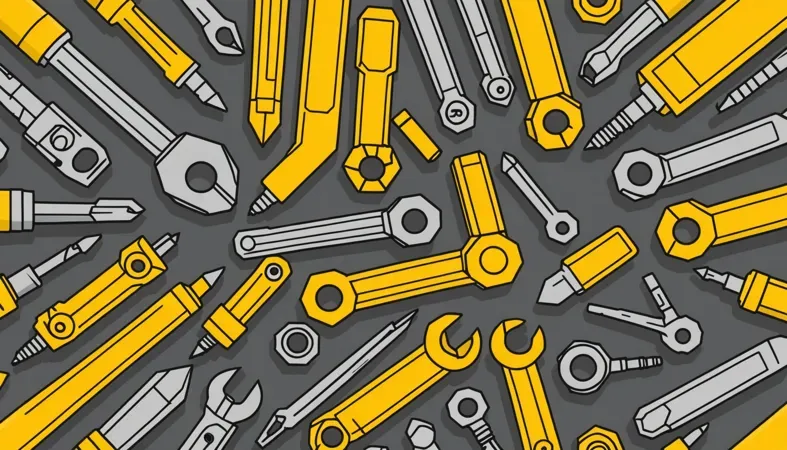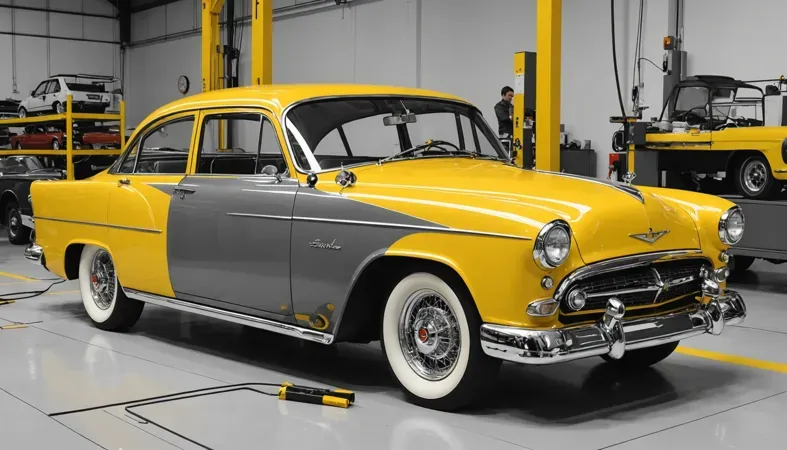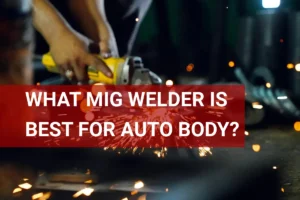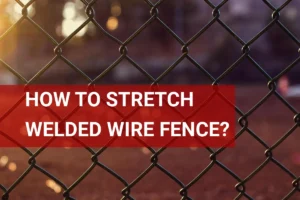How to Remove Broken Exhaust Manifold Bolts Without a Welder? Tips, Methods & Common Issues
Published on: February 6, 2025 | Last modified: March 4, 2025
By: Tyler James
Exhaust manifold bolts are the fasteners that hold the exhaust manifold to the engine. They help guide exhaust gases out of the engine safely.
How do you ask how to remove broken exhaust manifold bolts without a welder? It’s important to know this process, as broken bolts can lead to leaks and engine problems. I’ve faced it myself, and getting those stubborn bolts out without welding can save a lot of headache and time.
In this guide, you’ll discover different types of exhaust manifold bolts, what tools you need, clear steps for removal, precautions to take, methods for getting those pesky bolts out, factors that affect removal, and aftercare tips. Plus, we’ll touch on benefits and other solutions related to how to remove welded bolts. You won’t want to miss these practical insights!
Contents
- How to Remove Broken Exhaust Manifold Bolts Without A Welder?
- What Are Exhaust Manifold Bolts?
- Types Of Exhaust Manifold Bolts
- Prerequisites: What Do You Need?
- Steps to Remove Broken Exhaust Manifold Bolts Without a Welder
- Precautions
- Methods for Removing Broken Exhaust Manifold Bolts
- Factors Affecting the Removal Of Broken Exhaust Manifold Bolts
- How to Address Common Problems With Exhaust Manifold Bolts
- Advanced Techniques for Removing Broken Exhaust Manifold Bolts
- Top Benefits You Can Expect
- Where Are Exhaust Manifold Bolts Used?
- Other Options for Removing Broken Exhaust Manifold Bolts
- Frequently Asked Questions (FAQs)
- Conclusion
- Additional Reading
How to Remove Broken Exhaust Manifold Bolts Without A Welder?
Exhaust manifold bolts connect the exhaust manifold to the engine. To remove broken exhaust manifold bolts without a welder, use a left-hand drill bit or an extractor set. These methods work best on bolts up to 10 mm (0.4 Inches) in diameter. Difficulty varies by rust and corrosion but is common in automotive repairs. When welding on a vehicle, it’s important to know what to disconnect to prevent electrical damage.
What Are Exhaust Manifold Bolts?
Exhaust manifold bolts are essential fasteners that connect the exhaust manifold to the engine’s cylinder head. They come in various sizes, typically ranging from 8 mm to 12 mm (5/16 in to 1/2 in) in diameter. These bolts must withstand high temperatures, often exceeding 400°C (752°F), due to their proximity to the exhaust flow. They are usually made from strong materials, like steel or alloys, to prevent warping or snapping.
Now, let’s discuss a challenging task: removing broken exhaust manifold bolts without a welder. I faced this problem when a bolt snapped off while I was working on my car. It was frustrating, but I learned effective tricks to tackle this issue without needing a welder.
While working on my friend’s 2003 Dodge Ram, I used a broken exhaust manifold stud removal tool. This tool allowed me to grip the remaining bolt without damaging the surrounding area. Ever had to deal with rust-welded bolts? It’s a hassle, right? But with the right approach, you can address those rust issues without welding.
Types Of Exhaust Manifold Bolts
What types of exhaust manifold bolts will you encounter?
-
Steel Exhaust Manifold Bolts
These common bolts offer good strength. To remove stubborn bolts, first use penetrating oil like PB Blaster. Spray it generously on the bolts, let it sit for 15-20 minutes, then use a socket wrench to turn them counterclockwise.
-
Stainless Steel Exhaust Manifold Bolts
Stainless steel bolts resist rust and corrosion. If these break, soak the area with a mix of acetone and automatic transmission fluid (ATF). To remove, drill a pilot hole in the center of the broken bolt, then use a screw extractor to pull it out.
-
Cast Iron Exhaust Manifold Bolts
These strong bolts can be fragile. Gently heat the bolt head with a torch, then turn it with a wrench. Make sure the area is clean, as dirt can cause setbacks.
-
Carbon Steel Exhaust Manifold Bolts
Carbon steel bolts are tough and often coated. For broken ones, apply heat to expand the bolt. Alternate heating and cooling cycles can help loosen the bolt for easier extraction.
-
High-temperature Exhaust Manifold Bolts
These bolts withstand extreme heat, making them reliable. To extract them, use a combination of heat and penetrating oil. Start by slightly heating the area, apply the oil, and then use a wrench.
So far we covered the different kinds of exhaust manifold bolts. Next, let’s look at the essential requirements for this task.
Prerequisites: What Do You Need?
What do you need to remove broken exhaust manifold bolts without a welder?
- Exhaust Bolt Removal Tool: Use a tool like the NEIKO 04207A or OEMTOOLS 25316. This tool grips and twists broken bolts without damaging surrounding parts.
- Left-Handed Drill Bits: Get a set like the IRWIN 63401. These drill bits grasp the threaded part of the broken bolt for easier removal.
- Thread Tap Set: A tap set like the ARES 70021 helps clean the bolt holes after removal. Clean threads are essential for reinstallation.
- Torque Wrench: You’ll need a 1/2” (12.7 Mm) torque wrench, like the TEKTON 24340. This ensures you apply the correct pressure when installing new bolts.
So far we covered the necessary requirements. Next, let’s look at the steps to extract broken exhaust manifold bolts without welding.
Steps to Remove Broken Exhaust Manifold Bolts Without a Welder
Here are the steps to effectively extract broken exhaust manifold bolts without needing a welder.
-
Create Access to the Broken Bolt
First, create space to work. Remove any components blocking access to the broken bolt, such as heat shields and adjacent pipes. This may take about 30 minutes. A clear area allows better manipulation and reduces the chance of damaging surrounding parts.
Use socket wrenches or ratchets to disconnect nuts and screws. If you’re in a tight space, consider using crowfoot wrenches for extra reach. Keep track of all removed bolts; a magnetic tray can help.
-
Drill a Hole in the Center Of the Bolt
Drilling is essential for effective extraction. Start with a small pilot drill (Around 3.18 Mm or 1/8 Inch) to guide your larger bit. Use drill bits specifically designed for metal to avoid dulling quickly.
After penetrating the top layer of the bolt, use a larger bit (Around 9.53 Mm or 3/8 Inch) to widen the hole. Remember to go slowly; overheating can ruin your drill bit. I once rushed this part and snapped my bit inside—always take it easy!
-
Use Extraction Tools
Once you’ve drilled the hole, select a bolt extractor set. These tools are designed to grip what’s left of the bolt. I recommend an easy-out extractor, which grips snugly inside the bolt. You can often find them in sets with various sizes.
Insert the extraction tool gently into the drilled hole, then turn it counterclockwise. Applying some penetrating oil can simplify this step, reducing the likelihood of snapping the remaining bolt. Extractors can fracture, so proceed with caution!
-
Clean the Bolt Hole
After extraction, clean the bolt hole thoroughly. Use a wire brush or compressed air to remove metal shavings and debris. Leaving junk behind can cause issues with the new bolts fitting properly. It only takes a few minutes but saves headaches later.
Inspect the threads for damage. If you notice imperfections, consider using a thread chaser to restore the thread condition. A clean bolt hole ensures a strong and secure attachment for the new exhaust manifold bolts.
We have now covered methods for removing broken exhaust manifold bolts without a welder. Next, we will examine safety precautions.

Precautions
Let’s explore key safety measures to ensure a smooth process.
- Wear Eye Protection: Always wear safety goggles to shield your eyes from metal shards. I recommend brands like Bolle.
- Use a Good Drill: A heavy-duty drill ensures efficient removal of tough bolts. Choose a tool with at least 600 watts, like the Dewalt DWD520.
- Apply Penetrating Oil: This helps loosen rusted bolts by lubricating and reducing friction. I’ve used WD-40 with great results.
- Take Your Time: Rushing can lead to mistakes and create more issues. Slow actions increase control and safety.
Remember, safety is key—I care about your well-being!
You should now have a good understanding of precautions. In the next part, we’ll discuss methods for removing broken exhaust manifold bolts.
Methods for Removing Broken Exhaust Manifold Bolts
Here are methods to remove broken exhaust manifold bolts without a welder: drilling out broken bolts, using screw extractors, applying heat, using pliers or vise grips, and utilizing tap and die sets. Ensuring a clean and safe welding environment can greatly enhance your welding results and minimize issues like spatter, which you can learn more about in this guide on preventing welding spatter.
-
Drilling Out Broken Bolts
This method involves drilling through the center of the broken bolt. Start with a small bit, about 1.5 mm (1/16 Inch), then gradually increase to larger bits. It’s precise but risky—if you’re off-center, you could damage the surrounding metal.
-
Using Screw Extractors
Screw extractors are tools designed to grip and turn damaged bolts. First, drill a hole, then insert the extractor, which turns counterclockwise. Choose the right size; a 6 mm (1/4 Inch) extractor works for most bolts.
-
Applying Heat
Heat expands metal and loosens rusted bolts. Use a propane torch or heat gun, targeting 400°C (752°F). Be cautious—too much heat can warp components or ignite flammable materials!
-
Using Pliers or Vise Grips
If part of the bolt remains exposed, gripping it with pliers or vise grips can be effective. Apply steady pressure and twist gently. This method is quick and requires no special tools, but it only works if enough bolt is left to grip.
-
Utilizing Tap and Die Sets
A tap and die set lets you re-thread the damaged hole or the bolt. This is especially useful if part of the bolt is intact. Remember to use the right size tap, typically around M8 (5/16 Inch), for successful threading.
Factors Affecting the Removal Of Broken Exhaust Manifold Bolts
What factors influence the removal of broken exhaust manifold bolts? Let’s explore.
-
Material Of the Exhaust Manifold
The exhaust manifold is typically made from cast iron or cast aluminum. Cast iron is more prone to cracking, while aluminum can warp easily. The material directly impacts the technique you’ll use to remove broken bolts. If the manifold can’t withstand heat well, it’ll be tougher to deal with rust-welded bolts.
-
Condition Of the Broken Bolt
Is the bolt broken flush with the manifold or sticking out? If it sticks out, you can grip it with locking pliers, but for a flush bolt, you might need to drill it out. Assessing broken exhaust manifold studs (Support Pieces) or bolts is essential; rust or corrosion can complicate things.
-
Accessibility Of the Area
How cramped is your workspace? Limited space can restrict tool movement and affect your strategy. Ensure you have enough room for an angle grinder, drill, or extraction tools. Tight spaces can lead to mistakes, so plan your movements carefully!
-
Tools Available for Removal
The right tools make a significant difference. Options like bolt extractors or easy-outs can save time. Have penetrating oil on hand; it loosens rust-welded bolts by seeping into the threads. Good tool selection is crucial; worn-out tools can damage the work area.
-
Experience Level Of the Technician
Your skill level affects the outcome. If you’re experienced, you can quickly assess strategies and tool effectiveness; beginners might struggle. An experienced technician can apply proper techniques, increasing the chances of minimizing damage to the manifold during the removal process.
How to Address Common Problems With Exhaust Manifold Bolts
Let’s examine issues related to exhaust manifold bolts.
-
Stubborn Bolts That Won’t Budge
Exhaust manifold bolts can rust and corrode, making removal difficult. Check for signs of oxidation. Apply penetrating oil and wait an hour, then use a wrench. If needed, heat can help break the bond.
-
Damaged Exhaust Manifold
Neglected exhaust manifold bolts can cause cracks. Inspect for cracks using dye penetrant testing. If cracks exist, replace the bolts and repair the manifold by welding.
-
Difficulty Accessing the Break
Exhaust manifold bolts often hide in tight spaces. Use swivel sockets or universal joints to reach them. Extension bars can provide leverage.
-
Broken Bolt Pieces Falling Into the Engine
If exhaust manifold bolts break, fragments can fall into the engine. Inspect carefully during maintenance. Remove all debris to prevent engine damage.
-
Incorrect Extraction Tool
Exhaust manifold bolts require precise extractors. Identify the correct size before use. Use an extractor kit specific to bolt grades.
Advanced Techniques for Removing Broken Exhaust Manifold Bolts
If you’re looking for specialized methods to tackle stubborn broken exhaust manifold bolts, check out these expert-level techniques.
Reverse Drill Bits
Reverse drill bits are a game-changer when it comes to extracting broken bolts. Instead of standard drill bits, these are designed to turn in the opposite direction. They create a bit of torque while drilling, which often loosens the bolt.
Left-Handed Drill Bits
Did you know using left-handed drill bits can be surprisingly effective? Insert them into your drill and start. Sometimes, as you drill, the broken bolt may unscrew itself. It’s truly a simple yet effective solution, especially for bolts 8 mm (5/16 in) or smaller.
Using a Flame Wrench
A flame wrench, or air-acetylene torch, can be beneficial for stubborn bolts, providing intense localized heat. This method helps expand metal, breaking rust bonds. Just be cautious about nearby components!
Chemical Rust Dissolvers
Chemical rust dissolvers work on breaking down rust and corrosion. Apply a product like Rust-Oleum and let it sit for a while; it’ll get into those nasty rusted threads. You’d be amazed at how this can make a difference—it’s like magic!
Detailed Comparison of Techniques
| Technique | Effectiveness | Best For | Pros | Cons |
|---|---|---|---|---|
| Reverse Drill Bits | High | All sizes | Grips while drilling | Requires special bits |
| Left-Handed Drill Bits | Moderate | Up to 10 mm (0.4 in) | Can unscrew as you drill | Less effective on large bolts |
| Flame Wrench | High | Heavily rusted bolts | Localizes heat efficiently | Risk of damage to components |
| Chemical Rust Dissolvers | Moderate | All sizes | Convenient and safe | Need time to work |
Top Benefits You Can Expect
The main benefit of learning to remove broken exhaust manifold bolts without a welder is flexibility. When I worked on my old pickup, I used this method to save time and avoid extra costs.
It’s also less messy than welding, eliminates the need to buy a welder, and reduces the risk of damaging nearby parts. Plus, you won’t have to worry about your power supply or fuel costs, making it easier to tackle this problem anytime.
Where Are Exhaust Manifold Bolts Used?
I’ve seen people use various methods to fix exhaust issues. However, there are practical applications for removing broken exhaust manifold bolts without a welder, such as:
- Automotive Repair: Essential for replacing or upgrading exhaust components. Cost-saving repairs drive its popularity.
- Restoration Projects: In classic cars, removing damaged bolts is crucial for maintaining originality. It’s a favorite among restoration enthusiasts.
- Ductwork Installation: Fabricators sometimes use bolts in customized exhaust systems. Removing broken bolts ensures system integrity, which is common in custom shops.
- Marine Applications: Engine repairs on boats often require bolt extraction without heat to prevent damage to sensitive materials.

Other Options for Removing Broken Exhaust Manifold Bolts
Look, you’ve got a few alternatives. Products like a stud extractor set, such as Irwin’s Hanson, work wonders for broken exhaust manifold bolts. One thing I’ve come to realize is that using penetrating oil, like WD-40, can help loosen stubborn bolts, especially when combined with heat from a propane torch.
If those bolts are really stuck, consider an easy-out tool. Brands like Neiko offer reliable options for extracting broken bolts. Always remember, knowledge is power—having the right tools can save you time and hassle when tackling tough repairs!
Frequently Asked Questions (FAQs)
Now let us look at some common questions I typically get asked.
How Do You Get a Broken Bolt Out Of an Exhaust Manifold?
To get a broken bolt out of an exhaust manifold, you’ll need to drill it out, often using a screw extractor. This method is effective as it allows you to remove bolts without damaging surrounding parts. Ensure you use high-speed steel bits and choose the right size for the extractor they’re at least 1/8 in (3.2 Mm) thick.
How Do You Remove a Broken Bolt Without a Welder?
To remove a broken bolt without a welder, soak it in penetrating oil and use a left-hand drill bit. This method can help ease the bolt out by creating friction in the opposite direction. About 20% of broken bolts come out easily with this technique.
How to Get a Broken Bolt Out Of a Tight Space?
To get a broken bolt out of a tight space, you should use flexible drill extensions. These tools allow better maneuverability, letting you access hard-to-reach areas. Always keep safety in mind and wear eye protection when drilling.
How Do You Remove Rusted Welded Bolts?
To remove rusted welded bolts, applying heat can expand the metal, breaking the rust bond. A torch can help in many situations, but be careful to avoid damaging nearby components. About 75% of users find success with heat application. Understanding how bright a welding arc is crucial for ensuring safety during any welding process.
How Do You Remove a Welded Nut?
To remove a welded nut, you can cut a slot in it with a die grinder. This allows you to use a flathead screwdriver to twist it out. In some cases, applying heat can further help loosen the weld. It’s important to be aware of potential issues like crater cracks that can affect the quality of welding joints, which you can explore in detail through what causes crater cracks.
How Do You Get a Welded Bolt Off?
To get a welded bolt off, use a bolt extractor designed for stripped or damaged screws. Make sure to drill a pilot hole in the center of the bolt, then insert the extractor. About 80% of users succeed with this particular method.
Conclusion
We covered how to remove broken exhaust manifold bolts without a welder, including understanding exhaust manifold bolts, types of bolts, and the necessary tools. We also discussed steps, precautions, common problems, aftercare, and additional options for tackling stubborn bolts. Lastly, we highlighted the benefits of successfully removing these bolts.
To wrap it up, removing broken exhaust manifold bolts without a welder involves using methods like penetrating oil, bolt extractors, or left-hand drill bits. These simple yet effective strategies will save you time and money. Contact me if you’d like more guidance on how to remove broken exhaust manifold bolts without a welder or exploring how to remove welded exhaust bolts.
If you’re interested in enhancing your welding knowledge further, feel free to visit What is Welding for additional tips and tricks.
Additional Reading
- American Welding Society. (2020). AWS Welding Handbook: Welding Science and Technology (Vol. 1). Miami, FL: AWS.
- Lancaster, J. F. (1999). The Physics of Welding (2nd ed.). Oxford, UK: Pergamon Press.
Tyler is a passionate DIY welder and self-taught metal artist with years of hands-on experience transforming raw materials into functional and artistic creations. Specializing in MIG welding, Tyler crafts everything from custom furniture to outdoor sculptures, blending creativity with technical skill. Committed to making welding accessible, Tyler shares practical insights and project inspiration to help beginners and hobbyists confidently explore the world of metalworking.
American Welding Society, Art, Automotive Repair, Automotive Repairs, Bolt Extraction Methods, Broken Exhaust Manifold Bolts, Mechanical Troubleshooting, Safety, Tools For Removing Bolts, Welding, Welding Alternatives







